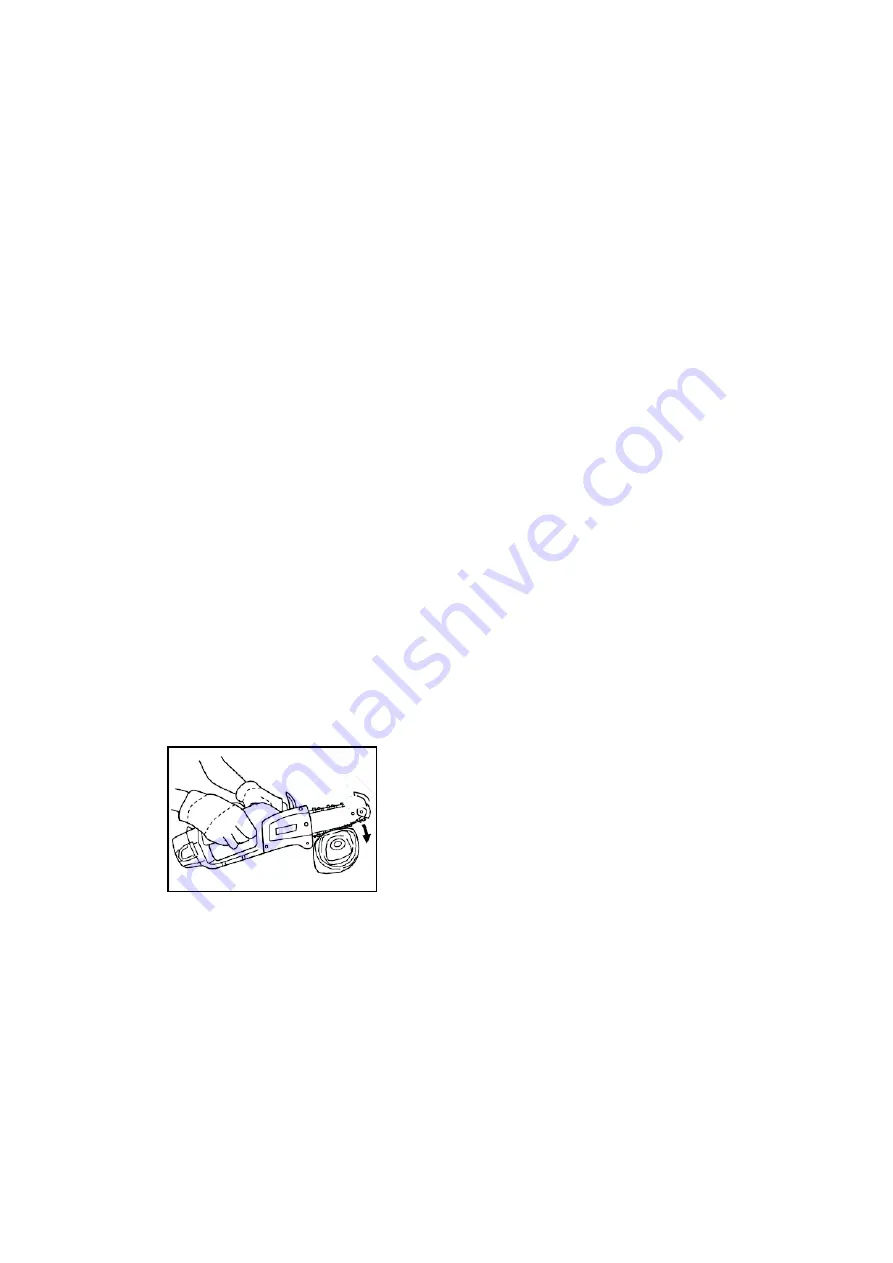
When transporting or storing chainsaws, always cover the guide plate. Proper operation
of the chainsaw reduces the likelihood of accidental contact with the chain in motion.
10.
Lubricate, tensify chains and replace accessories according to instructions.
Improper tensioning or lubrication of chains may result in chain rupture or increase the
likelihood of rebound.
11.
Keep handles dry and clean, free of grease and grease. Greasy handles tend to
slip and cause tools to slip out of control.
12.
Used only for cutting wood. Do not use chain saws for purposes other than
design. For example, do not use chain saws to cut plastic stone or non-wood building
materials. Use them for operations other than design purposes can lead to dangerous
situations.
13.
Causes of tool bounces and precautions taken by operators:
Rebound may occur if the head of the guide plate touches an object or the wood
grips and squeezes the chain during cutting.
Sometimes, the head of the guide plate touches an object, creating a sudden
reaction force that bounces the guide plate and charges the operator.
Squeezing the chain along the top of the guide plate may push the guide plate back
to the operator quickly.
Any of these counterforces can cause the chainsaw to go haywire and cause
serious injury. Do not rely solely on safety equipment mounted on the chainsaw. As
a chainsaw user, you should take a variety of measures to prevent accidental or
personal injury during cutting.
Incorrect operation of the tool or incorrect operation steps or conditions will
lead to a rebound, which can be avoided by following the following
precautions:
---
With a firm grip, grip the chainsaw handle with both thumbs and the rest of your
fingers, adjusting your body and arms to prevent rebound. The operator can control
the recoil if the correct precautions are followed. Please be careful.

















